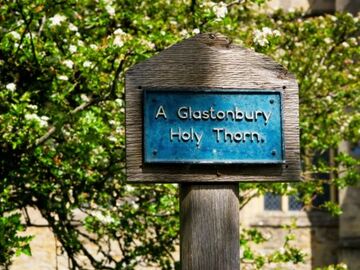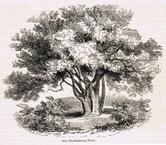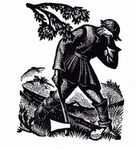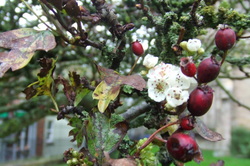Things to do and places to see in Glastonbury:
The Glastonbury Thorn
|
The Glastonbury Thorn has to be a tree with more history, mythand legend surrounding it than any other tree in existence.
The story begins back through the mists to a time to a legend telling us Joseph of Arimathea, following the Crucifixion of Christ, arrived on these shores, and founded the first Christian church in England. |
The Early Chapters
|
The story begins with the tales of Joseph of Arimathea, uncle to Christ, arriving in Glastonbury, a peninsula island surrounded by an inland sea and connected only to the rest of England by a tiny strip of land to the East. The Mendip Hills, surrounding the island were rich with tin and Joseph, a wealthy tin merchant is said to have visited the area many times; the stories also hinting that he brought the boy Jesus with him.
|
|
1642 – 1651 saw the time of the English Civil War, the execution of Charles I, and the replacement of the monarchy with the Commonwealth of England (1649–53), followed by a Protectorate (1653–59) under the personal rule of Oliver Cromwell. Ordered to be cut down by one of Cromwell’s soldiers on the grounds that it was a relic of superstition, we are told that as it fell, its thorns blinded the axe man in one eye. However, as with all good stories, it did not end there and local people protected and cultivated the tree in secret until such a time when a new chapter for the Holy Thorn could begin.
|
|
The thorn is a variety known as Crataegus monogyna biflora usually seen in the Middle East and unusual in that it flowers twice a year, in spring and again in winter, when the fruits of the spring blossoms are still the tree. The average life span of the tree is approximately 100 years but some have survived for several centuries. Many have tried to grow the Glastonbury Thorn from seed and direct cuttings, but it can only be grown by being grafted onto the common hawthorn, Crataegus monogyna.
|
Click on for the next chapters...
Dr Adam Stout is a writer and historian, and has been a Visiting Research Fellow at the Universities of Wales, Leicester, Exeter and Southampton. He has written and lectured widely on the idea of Glastonbury.
"Not all historians approach a legend as Adam Stout does, with such a fusion of critical acumen and human sympathy" Jeremy Harte

Glastonbury Holy Thorn. Story of a Legend
By Adam Stout
Hardback, 6.5" x 9.5", 154 pp.
Copiously illustrated, with line drawings, photographs, and 16 colour plates.
The Holy Thorn of Glastonbury is the stuff that legends are made of. Stories grow on it like fruit and wrap around it like creepers. It's a shape-shifter. It's been Catholic, Protestant, Pagan, universal. It's succoured royalty, loyalty, defiance and subversion. It's been condemned as patriarchal and revered as a feminine spirit. It's been harnessed by imperialists, peacemakers, nationalists and universalists. It's stood for better times and better days. For Christmas cheer and better nature, for all trees and nature, for peace and hope. This book is the biography of a symbol.
Dr Adam Stout is a writer and historian, and has been a Visiting Research Fellow at the Universities of Wales, Leicester, Exeter and Southampton. He has written and lectured widely on the idea of Glastonbury.
Published 2020
Green & Pleasant Publishing, Glastonbury
UK orders only
Glastonbury Abbey | The Glastonbury Experience Courtyard | Glastonbury Goddess Temple |
Glastonbury Thorn | Gog & Magog | Lake Village Museum | Library of Avalon | St. Margaret's Chapel &
the Magdalene Almshouses | Somerset Rural Life Museum | Ponter's Ball |
The Glastonbury Tercentennial Labyrinth | Glastonbury Tor | Wearyall Hill | White Spring |





